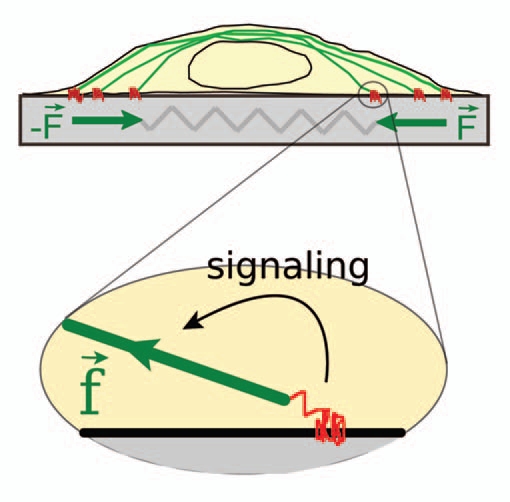Figure 1.

Acto-myosin contractility, adhesion complexes and rigidity. An adherent cell applies traction forces that are generated by the contractile acto-myosin machinery (green) and are transmitted to the substrate through integrin-based adhesion complexes (red). The resultant dipole forces, F, are resisted by the elasticity of the substrate which acts basically as a spring. Current models of rigidity sensing are mainly based on (local) stretching of sensory molecules of the adhesion complexes (zoom). On rigid-weakly deformable-substrates local force components, f, induce stretching and phosphorylation of specific molecules, thus triggering mechano-chemical signaling cascades that enhance in turn contractility.
